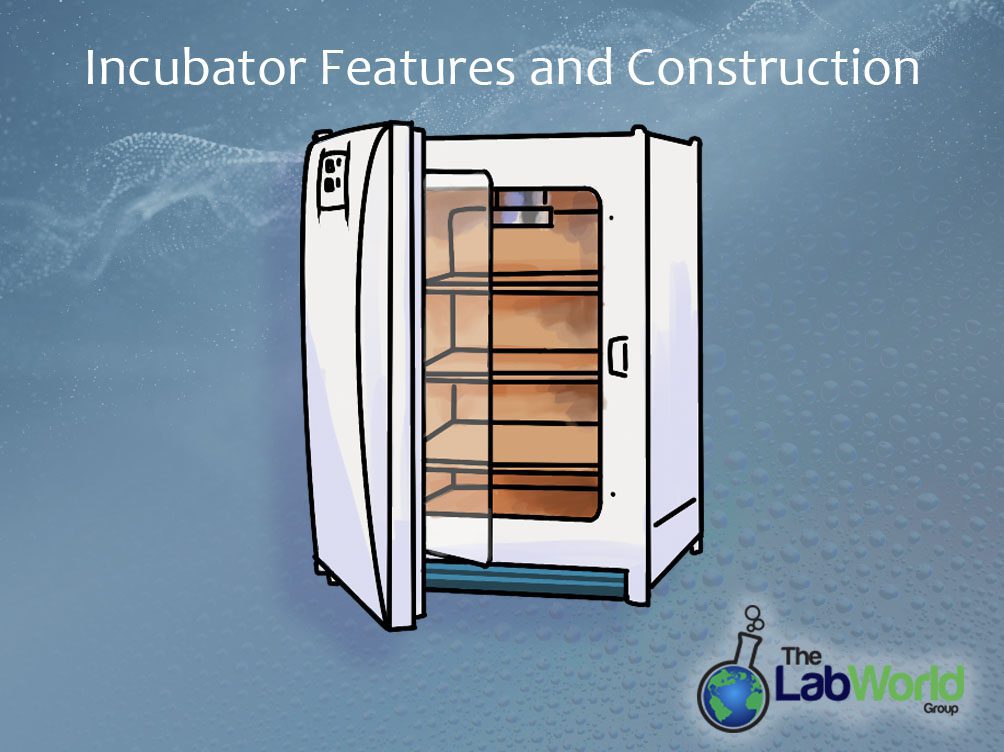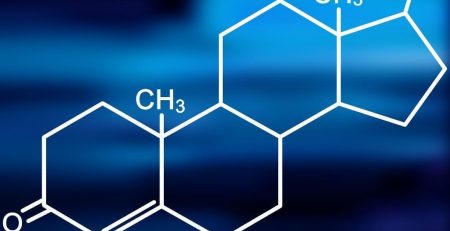
Incubator Features
Amanda2021-10-22T14:19:00+00:00Now that we’ve covered what is an incubator and how it’s different from other lab instruments, now we should talk about the different ways heat can be applied and the other bells and whistles that give this workhorse such a range.
Heating Methods
As we previously mentioned, with a few exceptions, an incubator’s temperature range usually falls between 5 above ambient and 70°C. Dispensing that heat can be handled in several ways, and each has its benefits and tradeoffs when it comes to impact on samples.
Direct Heat Incubator
Direct heat incubators surround a chamber with heating elements. That heat is distributed through the incubator chamber either by natural convection or with the assistance of a fan. The nice part about this setup is that temperatures are recovered quickly and heating is fairly uniform, faster than a water-jacketed model. Users also have the added security of high-temperature decontamination routines, up to 180°C. The downside to direct heat comes if you’re working with more sensitive cell samples. The vibration and current from fan distribution could dry out or disrupt the delicate structures.
Water Jacketed CO2 Incubator Principle
Water Jacketed Incubators use a layer set between the interior and exterior that’s filled with heated water. This layer sends heat to the chamber that’s then dispersed through convection. A water-jacketed incubator is well insulated against ambient temperature conditions, tends to have a high level of uniformity and accuracy, and in the event of a power outage retains heat for a long period giving users time to address a situation.
The trade-off here though is the weight of it. Since these are filled with water they’re more cumbersome than lighter air jacketed or direct heat models. As such if they need to be moved, you have to empty them, move, and refill and wait for them to come back up to temperature. That process can take more than a day to get back, so planning is key.
The other downside is contamination has to be closely monitored. These models aren’t capable of high temp decontamination routines, so users must rely on HEPA filtration, and Copper or Copper Alloy chambers for their antimicrobial properties. The stagnant water also needs to be methodically drained and refilled with the correct type of water to avoid bacteria, algae, and rust growth.
Air-Jacketed CO2 Incubator
Newer Air jacketed Incubators on the other hand are lighter and can be up and running quickly with less maintenance. Without the added bulk of the water, and air jacketed incubator can be repositioned quickly and easily, with less of a concern when stacking.
The air jacketed models also introduced the idea of a heated door as well for greater uniformity and reduced condensation. Like the direct heat models, an air jacketed incubator can run a high-temperature decontamination routine.
The downside to using an air jacketed incubator can be temperature retention. Air jacketed lab incubators are more sensitive to temperature changes, either from ambient temperatures in the lab, or if the door needs to be opened frequently, or there’s a power failure. Temperatures can be lost in a power failure due to a smaller heater capacity. To compensate, newer models feature more efficient insulation and heat monitoring within the chamber to kick in extra heating power when needed.
Incubator Sterilization Methods
Contamination is a great concern with incubation, after all the incubator’s purpose is to create ideal conditions for growth. That growth is everything within the chamber, not just the precious samples. So over the years, companies have developed multiple methods to curb the pesky unwanted contaminants while encouraging the right cells to flourish.
Regular cleaning is the first line of defense and the most basic of ways to guard against the introduction of unwanted contaminants. Wiping down surfaces with soapy water followed by a rubbing alcohol solution, emptying and sterilizing the water pan, and using moist heat sterilization or autoclaving parts can help reduce microorganisms. Sometimes however you need a bit more. The following routines are meant to complement and enhance proper maintenance, even if they’re highly effective they do not replace regular cleaning and hygiene practices.
HEPA Filtration
HEPA filtration can usually be found in most incubators. The air within the chamber can introduce unwanted particles and HEPA filtration is an efficient way to reduce that impact. A HEPA filter is 99.99% effective in removing particulates down to 0.3 microns in size, be it dust, pollen, mold, bacterial, or any other airborne contaminants.
Copper Incubators
Copper can be desired in an incubator chamber for its natural, inhospitable, antimicrobial properties. 100% copper lines the entire interior including shelving or is combined with another metal in an alloy. The nice part about the alloy is there’s less maintenance involved but you still get the benefits of copper.
As time has gone on, lab incubator manufacturers have introduced additional decontamination methods to address the need for greater control. Methods such as high-temperature dry heat decontamination routines, where the temperature is cranked to 180° and left to run overnight, killing anything inside. The added benefit being surfaces, shelving, etc can all remain in place while a routine runs and be efficiently cleaned.
Incubator UV Light
UV sterilization involves the use of a UV lamp that damages a microorganism’s DNA and destroys them. While this method is effective, the drawback is it’s only effective where the light touches. Any part of a chamber in shadow will not be sterilized. And if a microorganism has enhanced DNA repair, it may survive the process and won’t be as greatly impacted again despite repeated treatments.
Different manufactures will offer a combination of these methods, however, the price will reflect the added benefits. So careful consideration should be taken when weighing needs against budget.
Other Features found in Incubators
If your incubator is a CO2 or Tri-Gas model, it will have a method to monitor gas levels. Typically your CO2 monitor choices are Thermal Conductivity or Infrared. Infrared or IR sensors are desirable due to their ability to report CO2 readings without waiting for Humidity levels to stabilize after an opening. They activate in an instant and don’t drift over time. That rapid response generally will cost you more, however.
Thermal Conductivity or TC sensors are more cost-effective and are reliable, operating by monitoring the temperature change. Over time though they’ll need regular calibration to compensate for drift.
Humidity levels in an incubator help to create that hospitable environment for growth, aiding not only growth media but also nutrients for cells. To avoid evaporation, most operate at 85-95% relative humidity. Typically laboratory incubators use a pan filled with sterile, distilled water. This simple concept has had its series of innovations over the years. Innovations are as simple as positioning to avoid something falling into it, and ongoing contamination control with a UV lamp.
Other bonus features can include power outlets and ports to allow for compatible instruments like CO2-resistant shakers and stirrers to be used within the chamber, or for additional monitoring methods to be added.
Final thoughts
An incubator’s construction can have many impacts on its case use and the results you get. Things to consider are what your budget will allow, what your contamination tolerances are, and how sensitive your samples may be. With each additional feature, costs will go up, so it’s important to balance what you need with what you can get.
Purchasing a gently used lab incubator and CO2 incubator is a great way to stretch your budget further, get a great instrument, and include features that may have been out of reach. Our incubators go through rigorous testing and we’ve performed any maintenance that may be needed to provide a tip-top item but at an affordable price. Our inventory changes daily so chances are if you don’t see just the right fit right away, we can still help you find your ideal solution.













